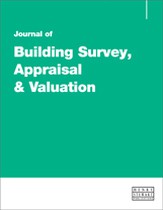The Bats in Churches project : What building professionals need to know about working with bats in English churches
Abstract
With one quarter of Britain’s mammals in serious decline and one-third of those most under threat being our more elusive bats, people who own, manage or access a variety of buildings are playing an ever more vital role in helping to conserve wildlife, often without even realising it. Buildings have become important roosting sites for bats, including houses, bridges, barns, mines, and historic buildings and churches. As older structures that have escaped modernisation, churches can provide ideal habitats for bats. In small numbers, bats in churches often go unnoticed, but where they roost in large numbers, or where multiple species use the same church, a conflict can arise between the wildlife and the community using the building and caring for the artefacts inside. In contrast to residential and commercial buildings, where bats and people are separated by a ceiling, churches often have open-roof architecture. This means that bat droppings and urine can damage historic items, the fabric and interior of the church, and create an unmanageable cleaning burden for the church community. This is why the Bats in Churches project is so important. This partnership between the Church of England, Historic England, Natural England, Bat Conservation Trust and Churches Conservation Trust was granted funding by the National Lottery Heritage Fund in 2018 and runs through 2023. The project brings together ecologists, church architects and heritage experts to trial and implement systems to manage the issues created by bats in churches, through a specially designed licence. The UK has 17 breeding bat species. Sadly, the loss of natural roosting sites coupled with factors such as intensive agriculture and urbanisation, including increasing levels of light pollution, have all had a dramatic impact on bat populations, which have seen serious declines in the last century. As well as making up a significant proportion of Britain’s mammal biodiversity, bats are indicator species. This means changes to our bat populations can reveal wider changes to local wildlife populations signalling the health of the environment upon which we all ultimately depend. This is why all species of bat in the UK and their roosts are protected by law. This means it is illegal to damage, destroy or disturb any bats or their roosts without having taken the necessary precautions and sought the correct advice from the Statutory Nature Conservation Organisation (SNCO) for your country. In England, this is Natural England, via the Bat Conservation Trust. This does not mean, however, that building work, roof repairs and other maintenance works cannot take place. It is entirely possible to carry out works alongside resident bats, but it requires careful planning and consideration of timings. This paper will discuss the law relating to bats and building works. It will cover how bats use churches and other buildings, and the impact they can have on church interiors and communities. It will consider the practicalities of surveys and licensing and will describe some interventions and mitigation solutions created by the Bats in Churches project.
The full article is available to subscribers to the journal.
Author's Biography
Cathy Wallace is Communications Officer for the Bats in Churches project, a partnership between the Church of England, Natural England, Bat Conservation Trust, Historic England and the Churches Conservation Trust, funded by the National Lottery Heritage Fund. The five-year project began in 2018 and aims to help church communities find ways to live in harmony with their resident bats. To date it has worked with more than 100 ancient churches across England providing practical help and support, education and engagement, and funding. The project also runs the National Bats in Churches Survey, a citizen science project to discover more information about how and why bats are using churches. Find out more at batsinchurches.org.uk.
Citation
Wallace, Cathy (2023, June 1). The Bats in Churches project : What building professionals need to know about working with bats in English churches. In the Journal of Building Survey, Appraisal & Valuation, Volume 12, Issue 1. https://doi.org/10.69554/IGSZ9984.Publications LLP
